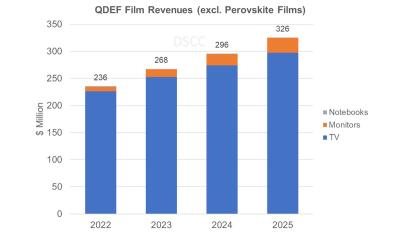Amazon launches its own brand of QD-enhanced LCD TVs
Amazon launched its own branded QLED TVs, which are QD-enhanced LCD TVs, based on Samsung Display panels. The Amazon Fire TV Omni QLED Series 4K smart TVs offers Dolby Vision IQ, local dimming and Alexa support.
The Fire TV Omni QLED Series are offered in 65" and 75" sizes. The 65" model costs $799.99 and can now be pre-ordered. Shipments will begin by the end of October 2022.





